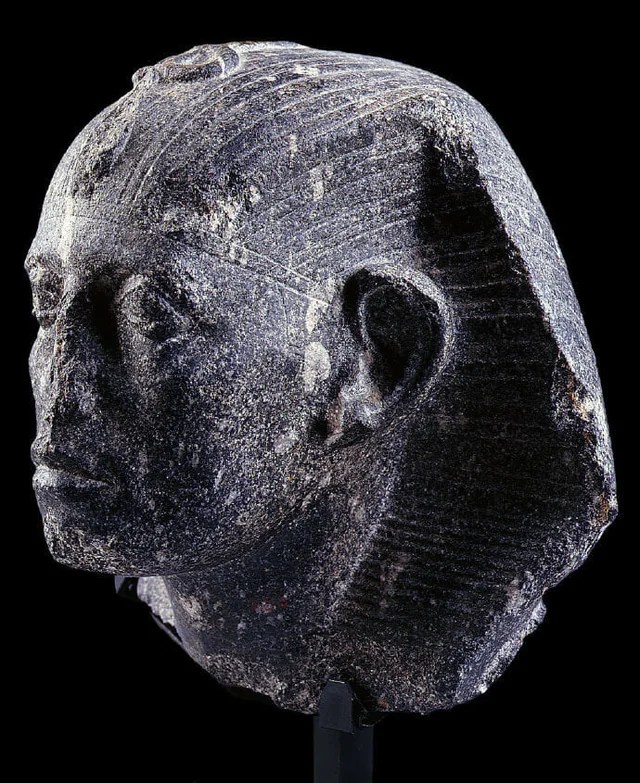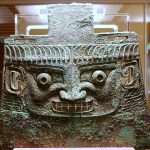Head of King Senusret III

In this sculpture, the head of King Senusret III is depicted not as a divine figure, but as a human being. This is evident in the king’s face, which shows wrinkles, a pouting mouth, and a protruding chin—features that convey old age, seriousness, and weariness.
He wears the pleated linen royal nemes headdress, adorned with the uraeus (the rearing cobra) protecting his brow. His ears are relatively large, and his small eyes are partly hidden beneath heavy eyebrows. The uraeus and the nose are now almost completely broken.

The face of Senusret III is one of the most distinctive and recognizable in all of Egyptian art. This head, a masterpiece of Egyptian craftsmanship, was part of a full-length statue likely portraying the king in his mature years.
Senusret III, who ruled Egypt for approximately 39 years, was a powerful king of the 12th Dynasty and is often regarded as one of the most formidable rulers of that era. During his reign, artists moved away from the idealized forms of earlier periods, favoring more realistic and sometimes exaggerated features in royal sculptures.

His reign was marked by stability, economic growth, and cultural development. He implemented administrative reforms to improve governmental efficiency, promoted trade and agriculture, and supported the arts and literature, fostering a flourishing cultural environment.

Senusret III’s significance lies in his military achievements, architectural projects, and his role in ensuring the stability and prosperity of Egypt during the Middle Kingdom. His reign represented a period of strength and expansion for the Egyptian empire.
Middle Kingdom, 12th Dynasty, reign of Senusret III, ca. 1878–1839 BC. Gray granite. From Faiyum. Now in the Egyptian Museum, Cairo.











